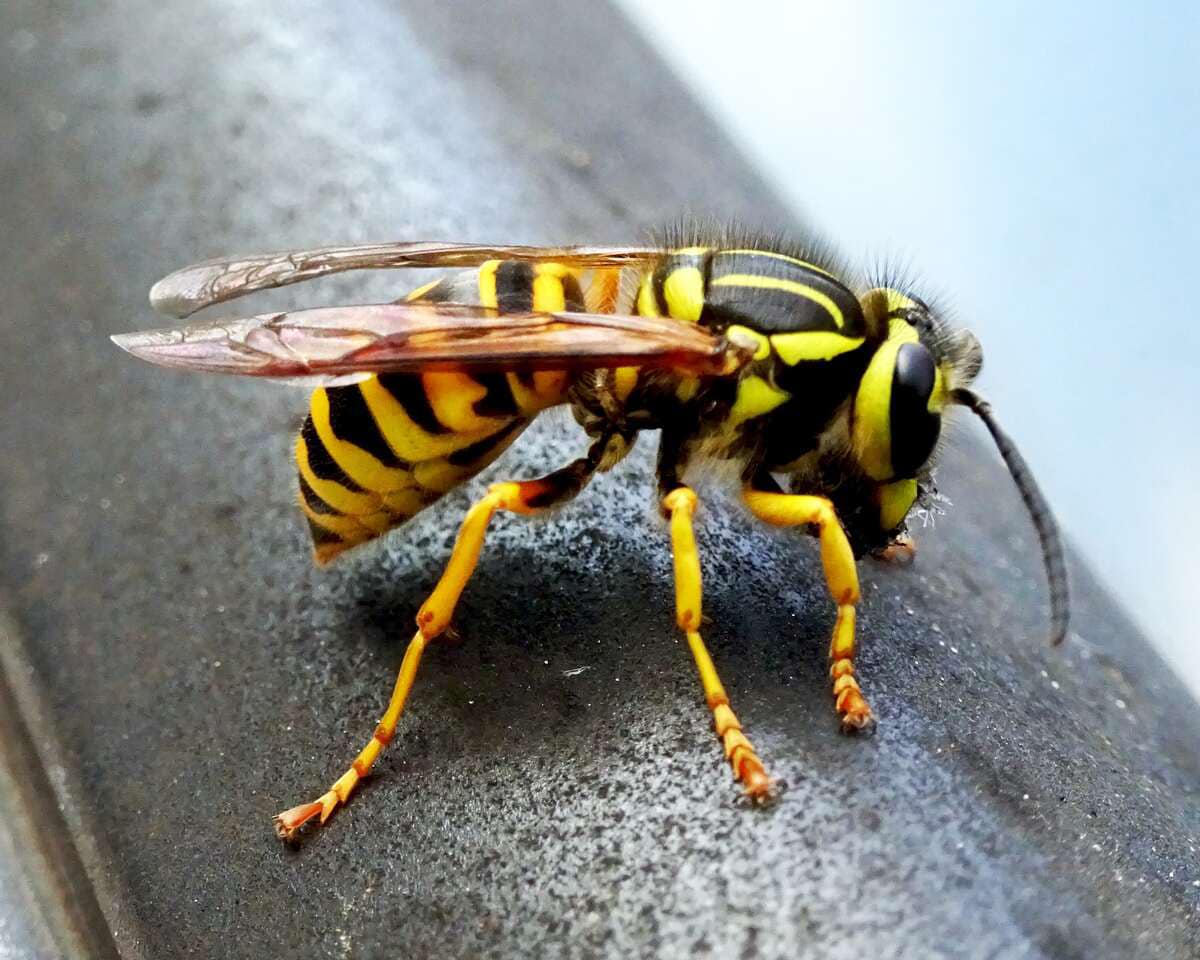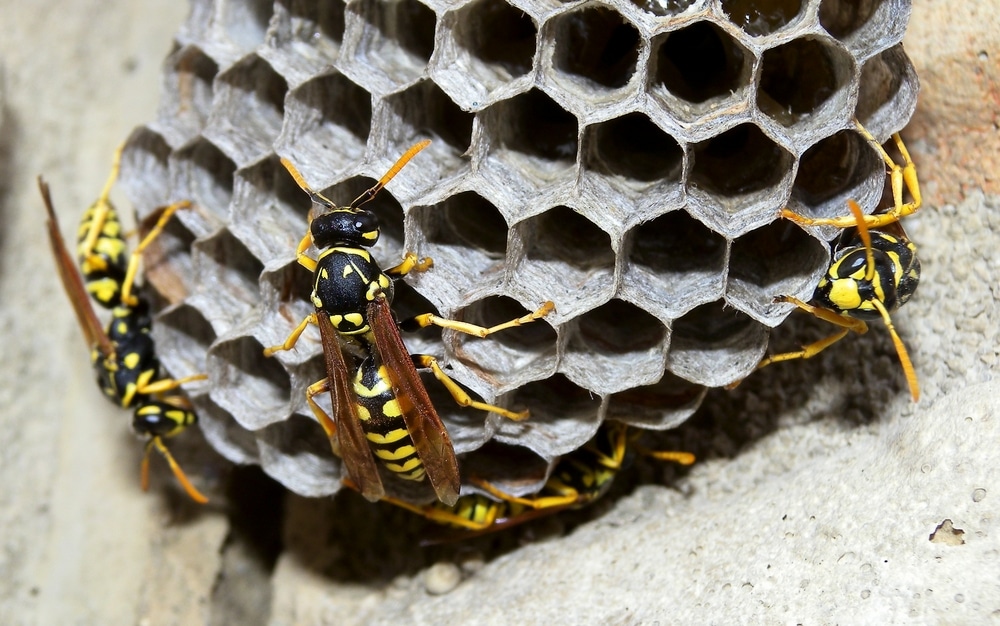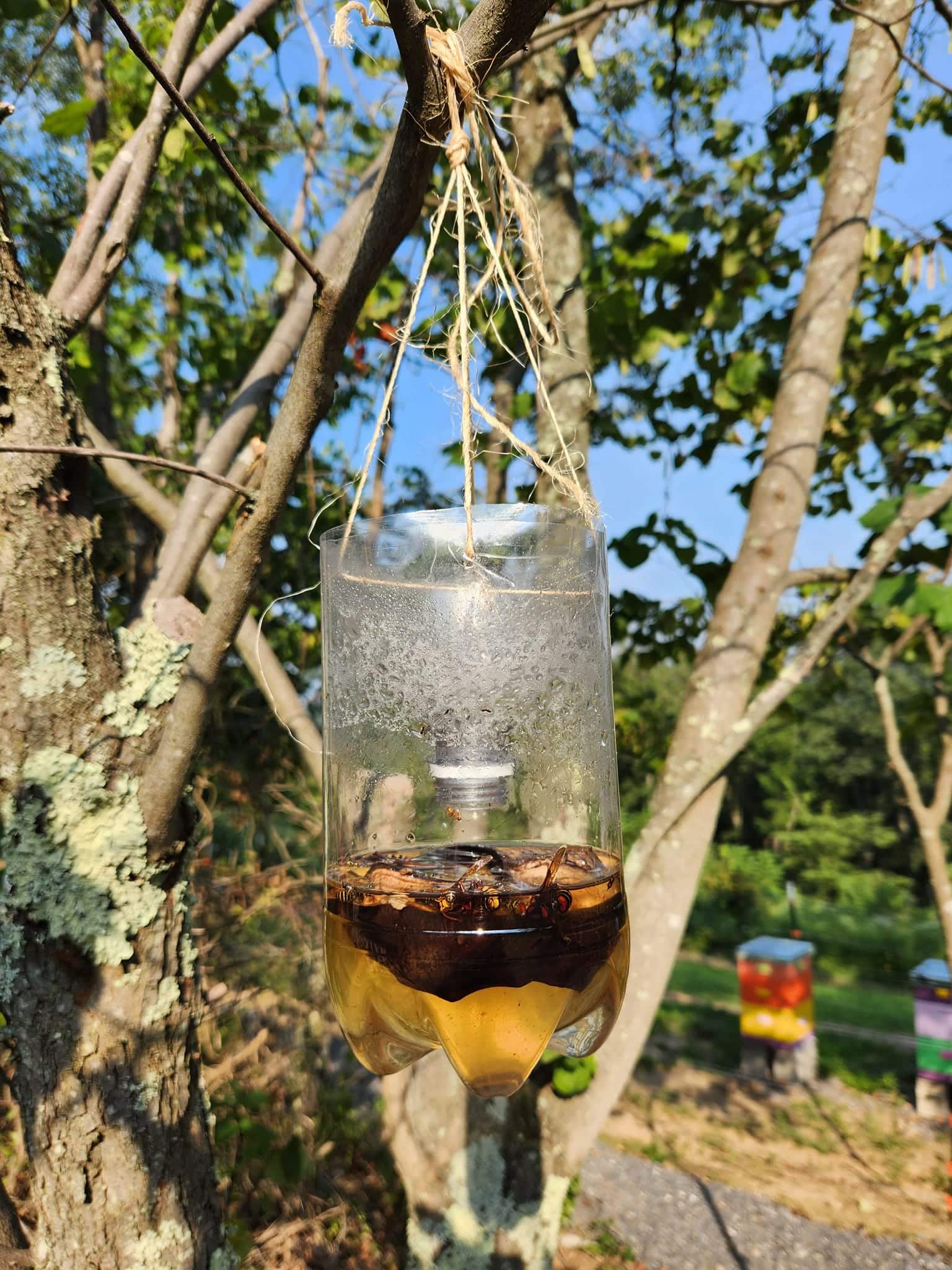Yellow jackets are genuinely menacing. They are aggressive, especially when threatened, trigger severe allergic reactions, contaminate food, disrupt outdoor events, and are generally a nuisance.
These stinging insects can make a home where you don’t want them to, including your picnic area and backyard.
Yellow jackets can quickly turn your outdoor festivities during the warm, pleasant summer months sour. Luckily, you don’t have to coexist with these black and yellow marked insects.
There are multiple safe and effective ways of getting rid of yellow jackets, thus ensuring you enjoy spending time outdoors without these unwelcomed visitors.
How To Get Rid Of Yellow Jackets
1. Preventive Measures
Implementing prevention methods goes a long way in reducing the chances of yellow jackets finding their way into your home and building their nests. Here are the practical strategies to adopt.
a) Remove Food Sources
Protein and sugar are fair game around yellow jackets, as these insects love meats and sweet substances. Luckily, you can make your home less appealing to yellow jackets by covering foods and beverages during outdoor activities like picnics and barbecues.
In addition, promptly clean any spills of sugary drinks, fruits, or other food items. Keep in mind that residual odors can attract yellow jackets even after the food is removed, so clean thoroughly.
b) Seal Entry Points
Seal any openings in walls, windows, siding, doors, and eaves with caulk or weatherstripping to prevent yellow jackets from entering. Consider installing a cap on your chimney (if you have one) to prevent them from building nests inside.
c) Proper Waste Management
Apart from keeping food away from yellow jackets’ reach, turn your attention to waste as well. To prevent these insects from accessing food scraps, close your garbage containers tightly. Moreover, frequently clean the trash cans to remove any food residues.
Also, do not add sugary fruits and meats to your compost pile because yellow jackets love these substances. Additionally, regularly turn the compost to promote decomposition and reduce odors.
Related Post:
- How To Keep Carpenter Bees Away
- How To Get Rid Of Yellow Jackets
- How To Kill A Wasp In Your House Without Getting Stung
d) Avoid Bright Colors Outdoors and Minimize Fragrances
Yes, bright-colored clothes are a popular fashion choice in summer, often contributing to a lively and cheerful aesthetic. However, make an exception when spending time in the yard because bright colors attract yellow jackets. Instead, choose neutral colors.
Furthermore, opt for unscented personal care products when spending time in areas where yellow jackets are prevalent. Strong perfumes, lotions, and scented products can attract yellow jackets.
e) Tend To Your Outdoor Areas
Eliminate potential nesting spaces for yellow jackets by trimming shrubs, bushes, and trees. Also, take out decaying or rotting wood from your property.
2. Find The Yellow Jackets Nests
You cannot effectively address the yellow jacket problem in your home if you don’t know where their nests are located. So, before implementing any eradication measures, find the nest and monitor their activity and flight patterns.
Check the nests in elevated or ground areas. Yellow jackets usually have a direct flight path between their nest and food sources, so watch where they fly to and from. Look for small holes in the ground with increased yellow jacket activity. Also, listen for buzzing sounds because these insects can be pretty noisy, especially near their nests.
Read More: How To Get Rid Of Cicadas Naturally
3. Use Spray Treatment
This method is highly effective, especially when handling areas with high yellow jacket activities or if the nests are visible. Buy a commercial wasp and hornet spray for outdoor use. It would be best to spray the yellow jacket nests in the evening or nighttime when they are less active.
Before using the spray, shake the can of wasp and hornet spray vigorously to ensure that the insecticide is well-mixed. Stand at a safe distance from the nest, preferably at least 15 to 20 feet away, and have a clear line of sight to the nest.
Since the initial spray can make some yellow jackets aggressive, plan an escape route and retreat calmly if needed.
Read More: How to Get Rid of Crane Flies
4. Foam Insecticides
Another way you can target and eliminate yellow jackets conveniently is with foam insecticides. The upside of using them is that they expand upon contact with a surface, ensuring better coverage and penetration into the nest.
Like spray treatments, you can buy foaming wasp and hornet sprays from the store. Utilize these guidelines when using foam insecticides.
- Vigorously shake the can before use.
- Stand 15-20 feet or more away from the nest.
- Point the nozzle towards the nest entrance, and press the button on the can to release the foaming insecticide.
- Apply the foam directly into the yellow jacket’s nest entrance for a thorough coverage.
5. Commercial Bait Traps
Commercial traps are worth considering if you want a non-toxic, user-friendly method of handling these stinging insects. Visit a garden supply store to purchase a trap made to attract and capture yellow jackets.
These traps require bait; fortunately, most commercial yellow jacket traps come with their own bait. If yours doesn’t, use homemade baits like sugary substances, fruit juices, or protein-based baits.
Ideal locations to place your yellow jacket traps include near outdoor eating areas, garbage bins, or other places where yellow jackets are commonly seen. Most traps come with a hook or hanger for easy placement, but make sure it is secure and won’t be knocked over.
6. Homemade Bait Traps
Are you up for a simple homemade yellow jacket trap? Save the money by making your own trap. Homemade traps are affordable, effective, and eco-friendly.
The different types of homemade traps for yellow jackets you can make are:
i) Soda Bottle Trap
Materials
- 1 or 2-liter plastic soda bottle
- Sweet bait (soda, sugar water, or fruit juice)
- Dish soap
- Utility knife
- String or wire
Instructions
- Cut off the soda bottle’s top third using a utility knife.
- Invert the bottle’s cut-off section and position it inside the bottom part to create a funnel.
- Mix sweet bait with dish soap to disrupt the surface tension.
- Pour the bait into the bottom.
- Hang the trap near the yellow jacket activity using string or wire.
ii) Jar Trap
Materials
- Glass jar with a lid
- Sweet bait
- Dish soap
Instructions
- Punch several holes in the jar lid using a nail or tiny drill bit.
- Mix sweet bait with some dish soap.
- Pour the bait into the jar, then close it.
- Place the jar in areas with yellow jacket activity.
ii) Paper Bag Trap
Materials
- Brown paper bag
- Sweet bait
- Dish soap
- String
Instructions
- Crumple the paper bag into a loose ball, resembling a nest.
- Mix sweet bait with dish soap.
- Pour the bait onto the crumpled bag.
- Hang the bag trap using the string in yellow jacket-prone areas.
iv) Wine Bottle Trap
Materials
- Empty wine bottle
- Sweet bait
- Dish soap
Steps
- Pour a small amount of sweet bait into the bottom of the wine bottle.
- Mix the bait with some dish soap.
- Place the bottle horizontally, propped up at an angle.
- Yellow jackets will crawl into the bottle and drown.
v) Bucket Trap
Materials
- Plastic bucket
- Sweet bait
- Dish soap
- Wooden plank or stick
Steps
- Fill the bucket with a few inches of sweet bait mixed with dish soap.
- Place a wooden plank or stick from the ground to the bucket’s rim.
- The bait will attract the yellow jackets, which in turn will fall in and drown.
7. Diatomaceous Earth (DE)
Sprinkle diatomaceous earth near yellow jackets’ nest entrances or areas of high activity. The powder will damage the wasps’ exoskeleton, leading to dehydration and death.
Note
Apart from DE, you can buy and apply dust insecticides like permethrin or carbaryl near yellow jackets’ nest entrances.
8. Natural Repellents
Yellow jackets will not make your home a sanctuary if they cannot establish their nests. You can deter them from doing so using natural repellents. Keep these insects at bay using the following:
- Peppermint oil spray
- Cucumber peels
- Citrus peels
- Vinegar spray
- Garlic spray
- Hot paper or hot sauce spray
- Mint plants
- Neem oil spray
9. Use Smoke
Use yellow jackets’ sensitivity to smoke against them. Create a controlled smoke around their nest to encourage them to abandon the area. You can buy a commercial bee smoker or roll materials like cardboard or newspaper into a tight bundle and light the end until it smolders.
Guide the smoke toward the nest entrance. Your aim is not to suffocate the yellow jackets but to create confusion and disrupt their communication.
Safety Considerations When Dealing With Yellow Jackets
- Dress in thick, long-sleeved shirts, long pants, gloves, and closed shoes. Put on protective headgear when dealing with a nest.
- Avoid sudden movements or loud noises to avoid provoking yellow jackets.
- Refrain from swatting at yellow jackets.
- Eliminate yellow jackets in the evening or night since they’re diurnal creatures.
- Remove the yellow jacket nest carefully without touching it with your bare hands, and place it in a sealed bag before disposal.
Conclusion
Successfully eliminating yellow jackets is essential for your family’s safety and peace of mind. This is because these wasp species attack in numbers and are capable of stinging repeatedly. The strategies above are effective against these insects, but if necessary, seek professional help. Also, prioritize safety when handling them.

I’m Mike Hyle, an exterminator with 7+ years of experience handling all sorts of pests, including mice, cockroaches, bed bugs, and termites. I also write for Pest Solutions DIY blog to share my knowledge and help homeowners keep their homes pest-free. Outside work, I enjoy hunting, snowshoeing, and exploring nature. Check out my blog for helpful pest control tips!



